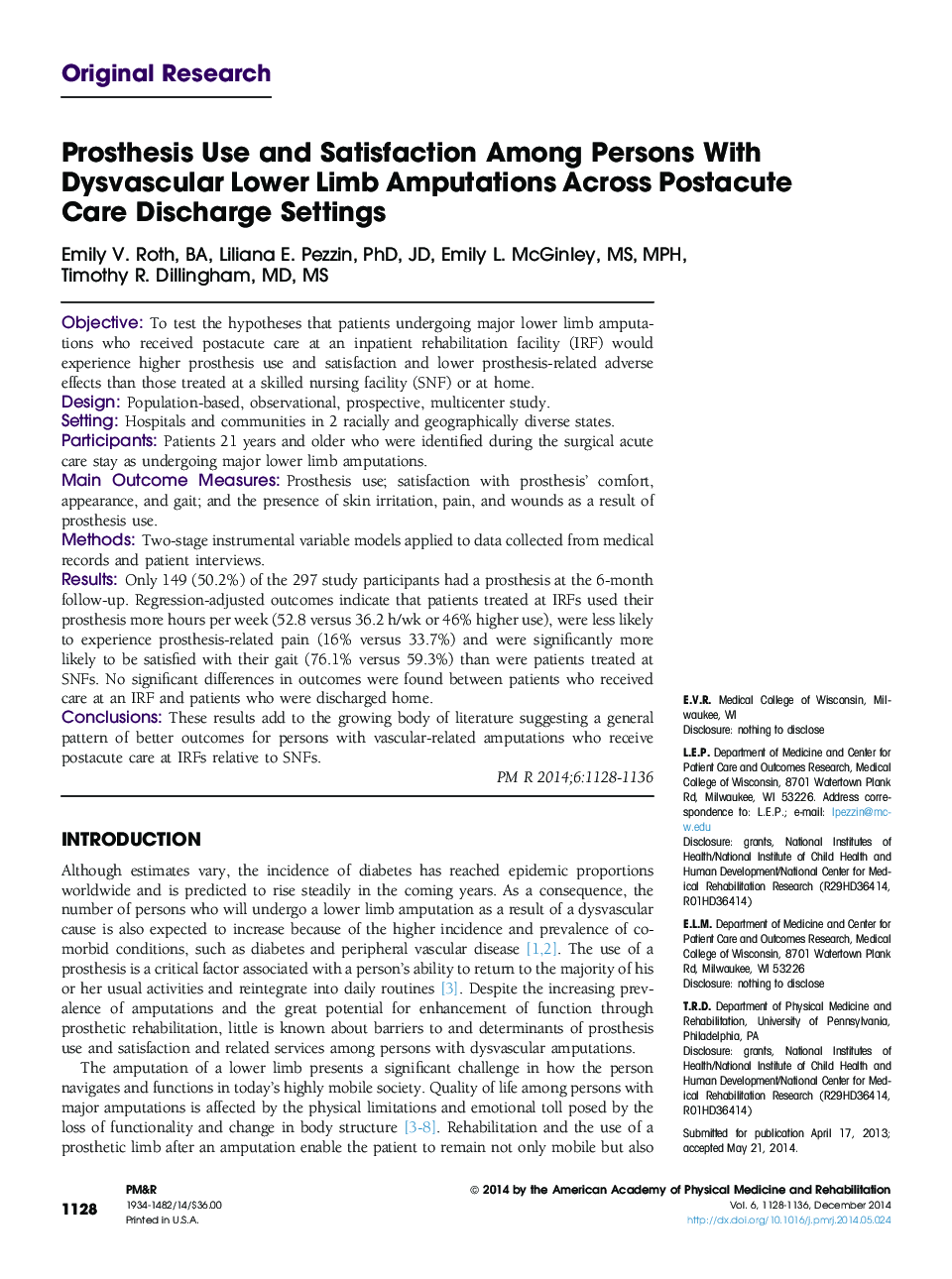| کد مقاله | کد نشریه | سال انتشار | مقاله انگلیسی | نسخه تمام متن |
|---|---|---|---|---|
| 2712254 | 1145081 | 2014 | 9 صفحه PDF | دانلود رایگان |

ObjectiveTo test the hypotheses that patients undergoing major lower limb amputations who received postacute care at an inpatient rehabilitation facility (IRF) would experience higher prosthesis use and satisfaction and lower prosthesis-related adverse effects than those treated at a skilled nursing facility (SNF) or at home.DesignPopulation-based, observational, prospective, multicenter study.SettingHospitals and communities in 2 racially and geographically diverse states.ParticipantsPatients 21 years and older who were identified during the surgical acute care stay as undergoing major lower limb amputations.Main Outcome MeasuresProsthesis use; satisfaction with prosthesis' comfort, appearance, and gait; and the presence of skin irritation, pain, and wounds as a result of prosthesis use.MethodsTwo-stage instrumental variable models applied to data collected from medical records and patient interviews.ResultsOnly 149 (50.2%) of the 297 study participants had a prosthesis at the 6-month follow-up. Regression-adjusted outcomes indicate that patients treated at IRFs used their prosthesis more hours per week (52.8 versus 36.2 h/wk or 46% higher use), were less likely to experience prosthesis-related pain (16% versus 33.7%) and were significantly more likely to be satisfied with their gait (76.1% versus 59.3%) than were patients treated at SNFs. No significant differences in outcomes were found between patients who received care at an IRF and patients who were discharged home.ConclusionsThese results add to the growing body of literature suggesting a general pattern of better outcomes for persons with vascular-related amputations who receive postacute care at IRFs relative to SNFs.
Journal: PM&R - Volume 6, Issue 12, December 2014, Pages 1128–1136